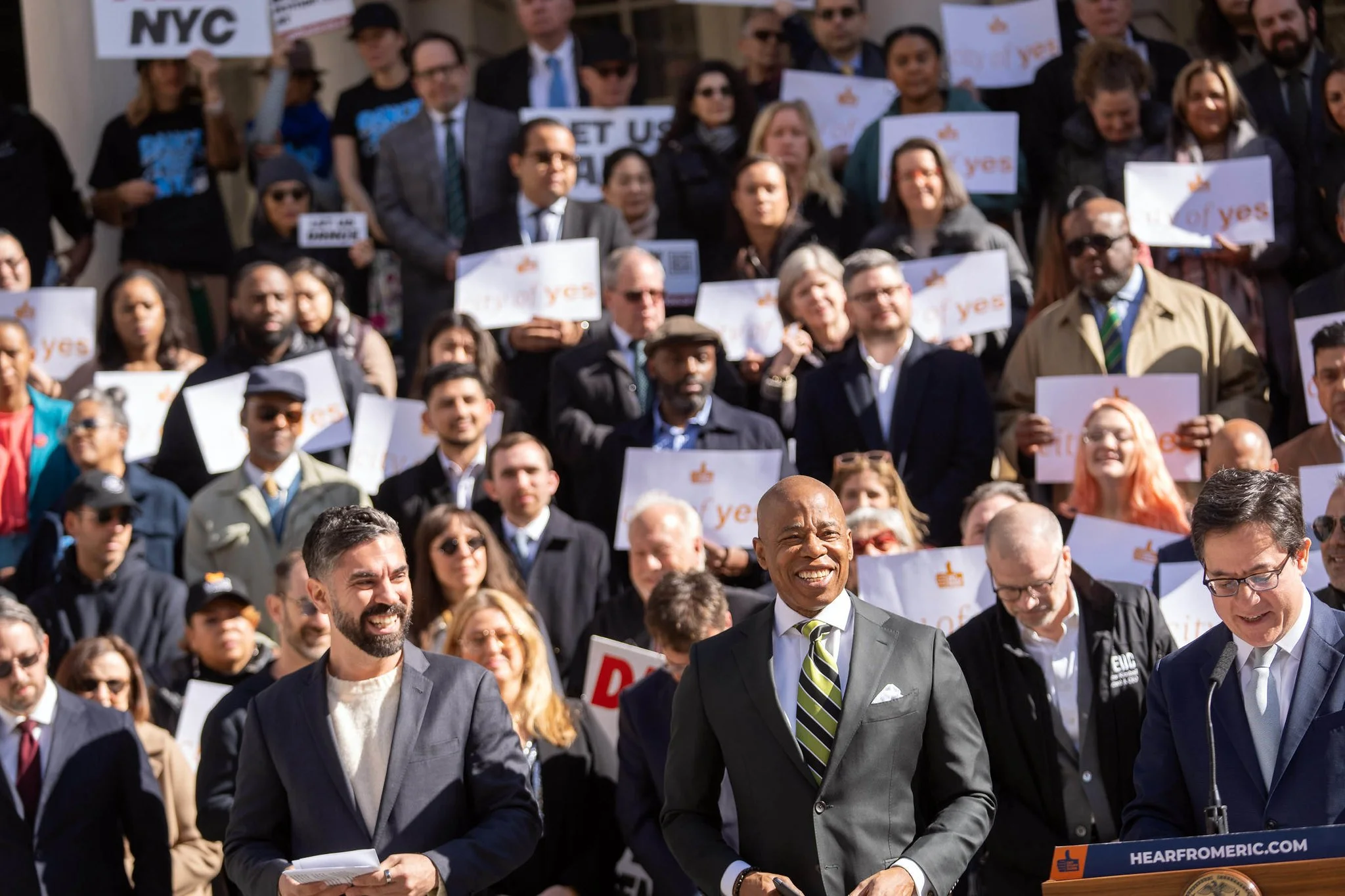Opinion: Clearing the air on City of Yes
/Dan Garodnick (front, right), the director of the Department of City Planning, joined New York City Mayor Eric Adams and others at a rally in support of the City of Yes in April. Photo by Ed Reed/Mayoral Photography Office
By Dan Garodnick
There’s no denying the gravity of New York City’s housing crisis. With record-high rents, severely limited supply, and homeownership increasingly out of reach for families, the time for action is now.
That’s why Mayor Eric Adams has proposed City of Yes for Housing Opportunity, a citywide plan to build a little more housing in every neighborhood. Carefully tailored to fit the character of each residential zoning district, this initiative will enable a lot of new housing overall without putting undue burden on any one neighborhood.
As City of Yes makes its way through public review, we’ve heard lots of questions and some unfortunate misinformation about this plan. As the City Planning Commission moves toward a vote on this important proposal, let’s take a step back and talk about what City of Yes would actually mean for New York communities.
First, why is more housing necessary at all? Simply put, because there aren’t enough homes for New Yorkers. The 2023 Housing and Vacancy Survey shows that the citywide rental vacancy rate sits at just 1.41 percent – the lowest it’s been since the 1960s. New York City has failed to build enough to keep up with demand for decades now, creating today’s housing shortage and a massive imbalance of power between tenants and landlords. When there aren’t enough homes to go around, rents go up and every day New Yorkers suffer.
The housing shortage doesn’t just impact people who want to move to the city – it hurts longtime New Yorkers who are looking to move closer to family, find housing after returning from college, upgrade or downsize as their family changes, or who need accessible housing as they age. Census data also shows that household sizes have been shrinking in recent decades, meaning that even the same number of New Yorkers need more homes to fit their needs.
To address this shortage, City of Yes would create housing opportunities in every neighborhood, including more housing types, so New Yorkers have more options that fit their needs in the communities where they live. Many of these homes would offer permanently-affordable, income-restricted housing.
For instance, through the Universal Affordability Preference (UAP), City of Yes would create more permanently-affordable, income-restricted homes than any other inclusionary housing program in the history of New York City zoning. If UAP had been in place since 2014, 20,000 more affordable homes could have been built – enough to house 50,000 New Yorkers. And other parts of City of Yes will support low- and mid-rise development that matches existing neighborhoods, including affordable homeownership. Those are more than just numbers. Having that kind of security in your home can be life-changing.
New Yorkers, especially in the outer boroughs, can be rightfully concerned about parking when they hear about new development. In many parts of the city, people need cars – and that’s why I want to be clear that City of Yes will not ban parking in any building. Instead, we’re looking to lift antiquated, arbitrary parking mandates that requires spots that drive up housing costs and often end up going unused. Planners in Manhattan in the 1950s and 60s did not know precisely how much parking people in Queens in the 2020s would need – people on the ground in neighborhoods do.
With City of Yes, we want to get zoning out of the parking conversation so parking is created where residents need it, rather than being mandated by government. If someone wants to include lots of parking in their building, great. If it’s unnecessary, that’s fine too.
Similarly, we’ve heard that communities do not have the infrastructure to accommodate new housing.
However, City of Yes would not have a drastic impact on any one neighborhood; by creating just a little more housing in every neighborhood – and over a long period of time – the proposal avoids over-burdening any one neighborhood’s infrastructure. Moreover, the Adams administration is working constantly to improve New York’s infrastructure, from investing $1.2 billion in stormwater flood mitigation efforts to opening more K-12 school seats than at any time in the past two decades.
Another benefit of allowing for a little more housing across the city is that it prevents a few neighborhoods from being responsible for all housing growth. Indeed, over the past few decades, New York City has seen a highly uneven distribution of new housing. In 2023, just 10 of the city’s 59 community districts produced as much housing as the other 49 combined. This approach has placed an undue burden on just a few areas and failed to keep up with citywide demand.
With City of Yes for Housing Opportunity, every neighborhood will contribute a little more housing to create the overall change we need, helping reduce housing costs and setting our city on a more equitable path. To learn more about the plan, including an in-depth FAQ that clears up other common questions and misconceptions, visit nyc.gov/YesHousingOpportunity.
Dan Garodnick is the director of the Department of City Planning.




